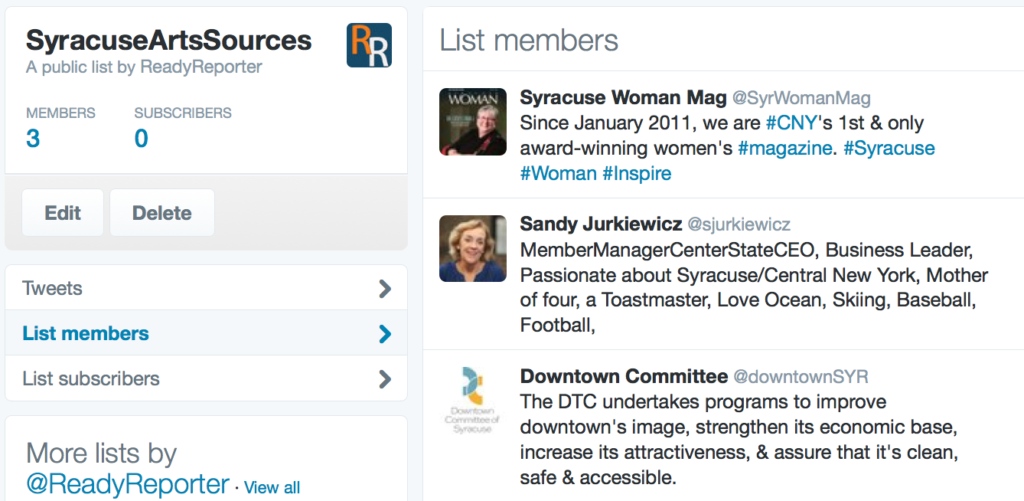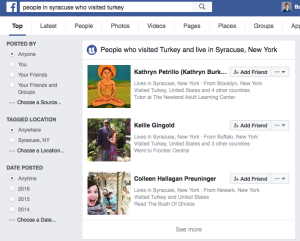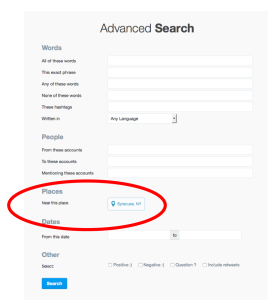I love it when I can get software to do work for me. Quicker, better, smarter reporting– that’s the goal of this blog.
So here’s one new tool that saves me so much time and does something I would never do on my own — search Twitter for sources on a topic and compile them.
IFTTT, which stands for If This, Then That is the website. You can pair social media or apps together so if one things happens in one you can do something or collect that info in another.
So here’s an example. I was teaching Arts Journalists recently and so I wanted to see if I could find some sources for them in the metro Syracuse area. I figured people who tweet using #syracusearts as a hashtag are people who know and care about the arts — and thus could be sources. And some would be sources they might not find in traditional ways.
So ITTT has what are called “recipes,” really formulas, for how to do hundreds of functions. On the left (below) I put in my hashtag and on the right I told it to compile people who tweet with that hashtag into a twitter list. Here’s the recipe:

Here are three sources that it compiled for me. Two I would have known, but not the second:

Full credit for teaching me this goes to Doug Haddix, and his seminar at the conference of Investigative Reporters and Editors, IRE, this summer.
Take 10 minutes and read all the recipes at IFTTT — and see what great new things you can get it to do for you.

 Today is Eid al-Fitr, one of the holiest days for Muslims. It’s the end of Ramadan, the season of fasting and prayer (see
Today is Eid al-Fitr, one of the holiest days for Muslims. It’s the end of Ramadan, the season of fasting and prayer (see  The first is a post by a Syracuse University professor noting that if his study abroad course had happened (apparently it didn’t) that students and faculty would be leaving from Turkey today. He might still be interesting to talk to as he probably has some contacts there.
The first is a post by a Syracuse University professor noting that if his study abroad course had happened (apparently it didn’t) that students and faculty would be leaving from Turkey today. He might still be interesting to talk to as he probably has some contacts there.
 hashtag or keyword and then by place. Go to the
hashtag or keyword and then by place. Go to the  With Florida under a Tropical Storm Watch, I thought it time to update and repost some resources for both journalists and citizens related to hurricanes.
With Florida under a Tropical Storm Watch, I thought it time to update and repost some resources for both journalists and citizens related to hurricanes.




